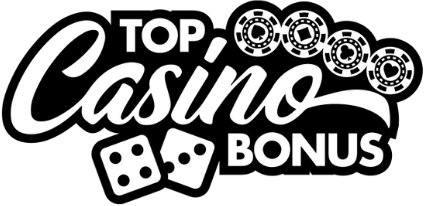Different blackjack variants explained (e.g., Spanish 21, Pontoon)
If you’ve ever sat at a blackjack table, confidently holding a hard 16 and thinking you’ve got the game figured out, think again. Most newcomers, and frankly, more than a few regulars, believe all blackjack games follow the same rhythm: get close to 21 without busting, beat the dealer’s hand, simple as pie. But once you step off the beaten casino-path and explore beyond the basic American blackjack, you’ll discover a whole world of strategic nuance. Some variants throw out cards altogether. Others flip essential rules on their heads. You want to master this game? Then you need to see how these variants warp the battlefield.
Table of contents
Why blackjack isn’t just “blackjack”
What trips up most players is assuming that any game labeled blackjack plays by the same rules. But variants like Spanish 21, Pontoon, and even regional experiments like Double Exposure change the math considerably. Sometimes the dealer hits on soft 17. Sometimes the player can double more aggressively. I’ve seen players use the optimal American strategy at a Spanish 21 table and walk away muttering. Wrong strategy for the wrong game, like swinging a carpenter’s hammer in a blacksmith’s forge.
Standard blackjack bones
Before wading into variations, let’s lock in a baseline. Classic blackjack uses a 52-card deck (multiple decks, depending on the house) and begins with two cards each to player and dealer. You can Hit, Stand, Split, or Double Down. Blackjack (an Ace + 10-value card) pays 3:2. Dealers stand on soft 17 in legitimate tables, that right there can have a five-digit impact over time. Know that cold before exploring deeper waters.
Spanish 21: the rule-bending flamenco
Don’t let the inviting name fool you, Spanish 21 dances to its own tempo, and if you play standard blackjack here, you’ll burn your bankroll faster than dry brush in August. The core twist? Every 10 (but not face cards) is stripped from the deck. You’re left with 48 cards, and let me tell you, those missing 10s make a world of difference.
Unique rules and opportunities
Now, despite this increased house edge from missing 10s, Spanish 21 fights back with player-friendly rules. You can double after splitting, surrender late, and gain bonuses for 5+ card 21s, 6-7-8 combos, and more. One of the jewels? Player 21 always wins, even against a dealer blackjack. That’s worth its weight in gold over the long run.
Here’s the catch: you’ll need a revised strategy sheet tailor-made for Spanish 21. Don’t cherry-pick from basic blackjack charts; you’ll end up defaulting in ways that cost big. In my testing, proper adaptation lifted my advantage significantly, especially when doubling aggressively after splits.
Pontoon: blackjack’s British cousin with attitude
Pontoon looks similar on the surface but waltzes in with its own costume, vocabulary, and tempo. It’s primarily found in the UK and Australia, but I’ve spotted it in online lobbies of platforms like Thrills Casino and mixed into hybrid lobbies across Europe.
Rules to watch
Here are some cues to memorize before your first shuffle: both dealer cards are face-down, you must Hit on totals of 14 or less, and there’s no traditional Stand, it’s called “Stick.” Got a soft 18? You better be ready to dance with logic, not habit.
A “Pontoon” isn’t just a riverboat, it’s an Ace plus a 10-value card, and it beats all other 21s, including five-card tricks. Pontoons pay out 2:1, a rich reward if you’re riding the probabilities right. The trick here is recognizing when to aggressively go for the 5-card win despite busted nerves.
Double exposure: see the truth and pay the price
Every rookie eyeballs the open dealer cards at a Double Exposure table and thinks, jackpot! But there’s no free lunch in Vegas, or Macau, or Malta. In this variant, both dealer cards are exposed from the start, but blackjack only pays 1:1, and dealer ties win.
I’ve coached too many players who jump in swinging, thinking they’ve finally got the upper hand. But knowing what the dealer holds only helps if you know how to leverage that information. If they have a weak upcard, push hard. But against high pairs, don’t bother bluffing the mathematics.
Game selection is critical here. Some online casinos, like Unibet Casino, offer variants with slightly tweaked house edges. Do your reconnaissance before committing.
Super fun 21: optimism meets math
Super Fun 21 lures players in with cheerful names and quirky features. Blackjack always wins for players, even against dealer blackjack. Players can surrender at any time, and six-card 20s or more score automatic wins. Sounds like candy, right?
But here’s the kicker, they shave the payout on blackjack down to 6:5. That one change alone is enough to tip the house edge passed tolerable levels for seasoned players. It’s a classic bait-and-switch in glossy packaging.
If you’re just playing for simple fun, it’s fine. But if you’re here with scenarios, ratios, and a disciplined bankroll? Stay wary of golden carrots leading off a cliff.
Insurance and side bets: sugar in the gas tank
Don’t get me started on blackjack insurance. Every time the table offers it, I watch a sea of amateurs nod “yes” like sheep near a fence. They assume it’s a safety net, but in most cases, it’s an overpriced parachute that doesn’t open. If you haven’t already, study the real math behind blackjack insurance and understand when it might, if ever, make sense.
Same goes for side bets. They shimmer with promises of quick returns but usually come packed with house edge sharks. It’s like pouring sugar in your gas tank, a few might feel a harmless boost, but you’ll stall the engine over the long haul.
Understanding house edge through contrast
I often compare blackjack strategies to betting on other games with volatility, like crash games, those that rise and fall with timing-based exits. You wouldn’t dive into those unarmed with a stop-loss plan, right? Blackjack variants are no different. Anything that tampers with fundamental pace or payout structure demands you recalibrate your playbook.
If craps is your baseline for mathematical purity, where edge tracking and hedge bets mean everything, then treat every blackjack variation with the same rigor. In fact, many of my craps strategies taught me how to adapt probability trees efficiently across multiple game types.
Philosophy of mastery across variants
Here’s the rub, mastering blackjack isn’t just memorizing charts or counting cards. It’s about knowing the essence of each rule set and how it warps expected value, then adjusting fast and with precision. It’s like playing jazz: the melody’s there, but the best players improvise without losing harmony.
If you treat every table like it’s the same? You’re marching into battle with a drum when you need a scalpel. Study. Adapt. Respect the differences. Every variant tells its own story, but only if you’re skilled enough to read between the suits.





0 Comments